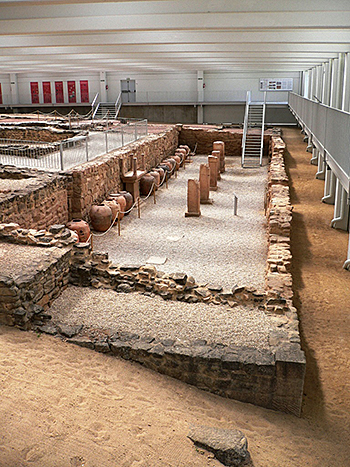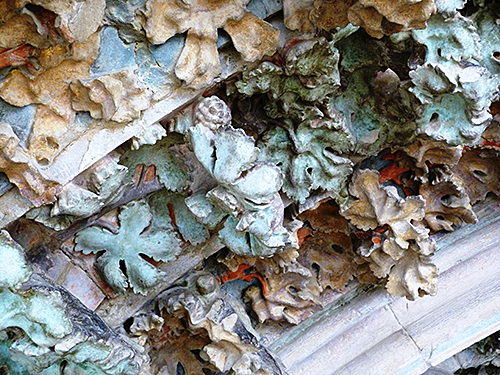October 18
lecture series
LAETIFICAT COR HOMINIS. WINE CULTURE IN NAVARRA
Wine in Navarre. From the first grapes to the Designation of Origin.
Carmen Jusué Simonena
UNED Pamplona
A historical vision of wine, vineyards, their extension and even their problems has in a good part of the Iberian Peninsula and, of course, in Navarre, an essential place of reference letter , it is the magnificent work Vignobles et vins du Nord-Ouest de l'Espagne by A. Huetz de Lemps (1967), inserted within the best tradition of regional geographical analysis that opened the guidelines for several programs of study carried out later on.
More than 2000 years have passed since the first news about the vine in this region, more than 20 centuries from the ancient feral vines to the domestication of the vines to give more and better fruit, because one of the great riches of wine is its solera as well as the climate, the soil or the hand of man that are the elements that make it possible. As in other areas of the Ebro Valley, the presence of vines in times prior to Romanization is an archaeologically proven fact.
In any case, in addition to brief news, Navarre was a land of vineyards and wine since the Roman occupation of the territory set in motion its well-known exploitation and exploitation mechanisms. The archaeological remains, the epigraphic or literary testimonies more or less abundant show extensive regions of the ager vasconum where the wine exploitation was daily and relevant. The Roman art, faithful representation of the people who elaborated it, transmits a practical and utilitarian sense and temperament, with an outstanding personality, based on the importance of the technique, and reflected in the architectural works, although with great importance also of the remaining manifestations, like the sculpture, the painting or the musivaria. The presence in this art of grapes, vines, vine shoots, elements allegorical to wine..., is constant. Mosaics, decorated funerary stelae, votive altars, some bronze figurines, as well as various reliefs, in addition to the many wine installations, eloquently convey the importance of the vine in this land.
Throughout the Middle Ages average, in view of these previous findings, any general analysis of this question for the medieval period must take into account this retrospective image, regardless of the fact that the almost total absence of information hinders the desirable link between the Late Antique period and the first centuries of the Middle Ages, in which the news already acquire a specific weight.
If in the last centuries of the Roman domination the cultivation of vineyards was common in large areas of the territory, and throughout the 11th century, with sufficiently expressive documentation, it is an evident reality, it is possible to propose a continuity in the gap of half a millennium that separates the two stages. We will therefore have to limit ourselves to collecting the status, more or less approximate, of the early medieval times on which the information available allows us to approach the reality and try to get an overall impression based on the status immediately preceding.
The beginning of the 19th century, during which important changes took place in the wine industry, appears to be linked, as in previous centuries, to a basically rural community, even in the most urbanized areas, and consequently linked to traditional customs, in final social behavior schemes that came from far back, although generalized in a good part of the Peninsula.
It was also a convulsive century, witnessing great upheavals such as wars, plagues, disentailments and social transformations. However, vine cultivation had experienced a significant increase, reaching its peak around 1880, coinciding with the development of phylloxera in France and the opening of borders for Spanish wines.
However, the combination of several factors throughout the 20th century such as: the creation of the association de Viticultores Navarros (1912); the celebration of the National Viticulture congress in Villava (1912); the strong expansion of Cooperative and private wineries after the parenthesis of the Civil War; the regulation of the sector and the creation of the "Navarra" Designation of Origin and the Regulatory committee (1958); the increase of vine growing hectares, about 42.000; the march towards a new stage in the 80s of the 20th century with the creation of EVENA (1981); the increase in bottling and the appearance of new wineries; the birth of association de Exportadores de Vinos de Navarra (1982); the changes in the framework varietal;the appearance of confraternities and brotherhoods, among which the Cofradía del Vino de Navarra stands out, as well as many other factors, allow an enthusiastic look towards the future, towards a future that the 2000 years of viticulture in Navarra makes strong, robust and full of hope.

1.- Cellar (cella vinaria) of the Roman villa of Arellano

Grapes, vines, grapevines in the archivolts of the doorway of Santa María la Real de Olite.
